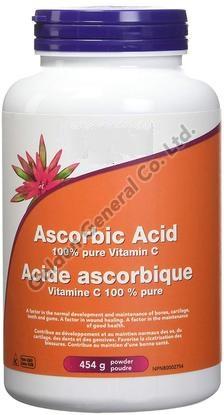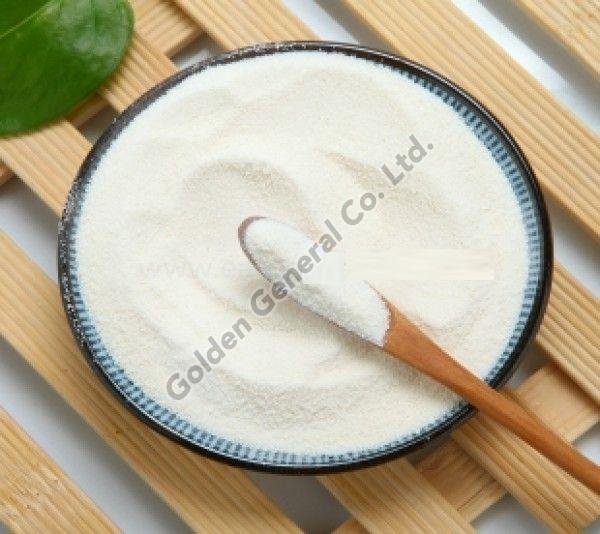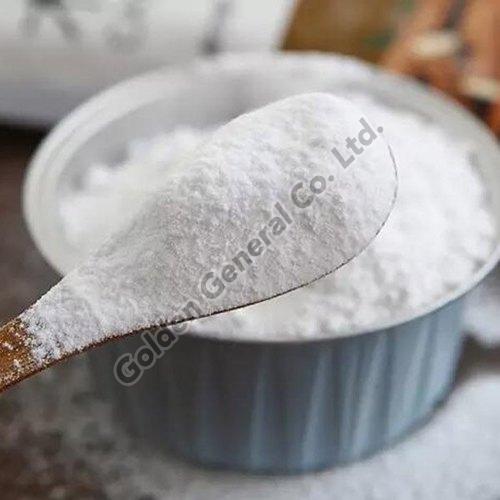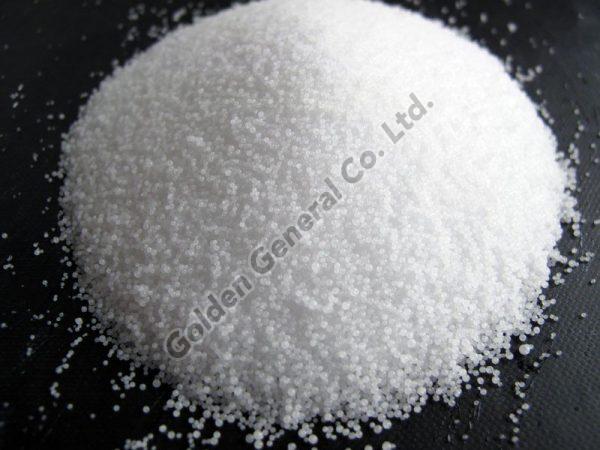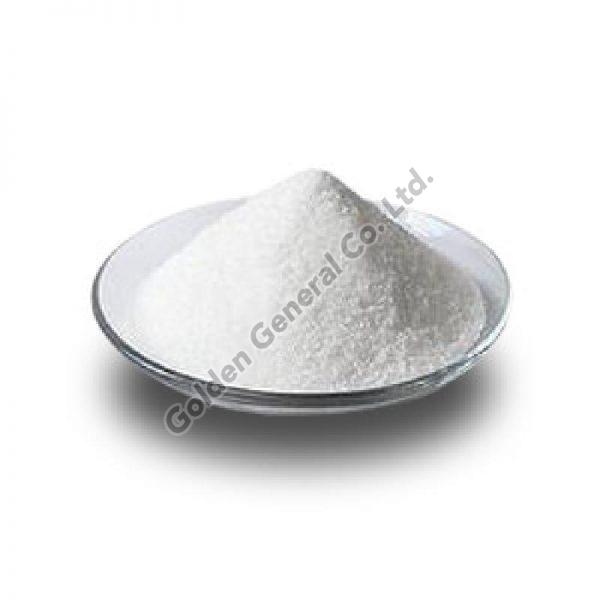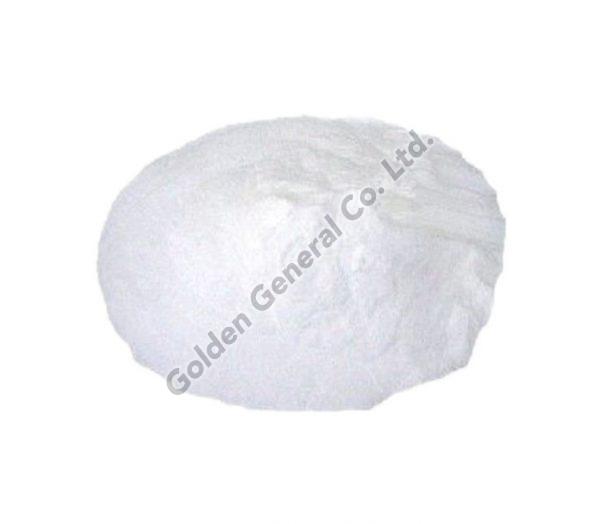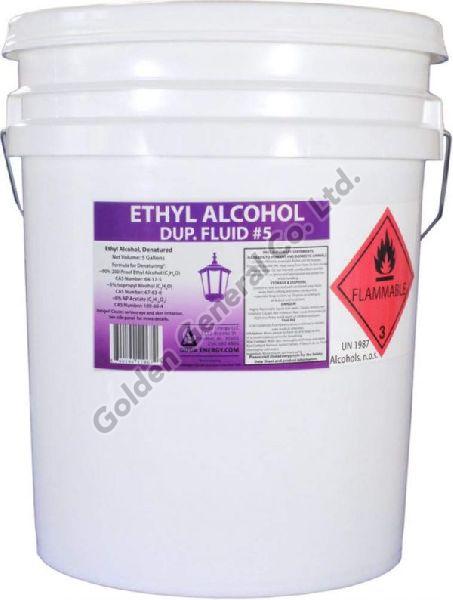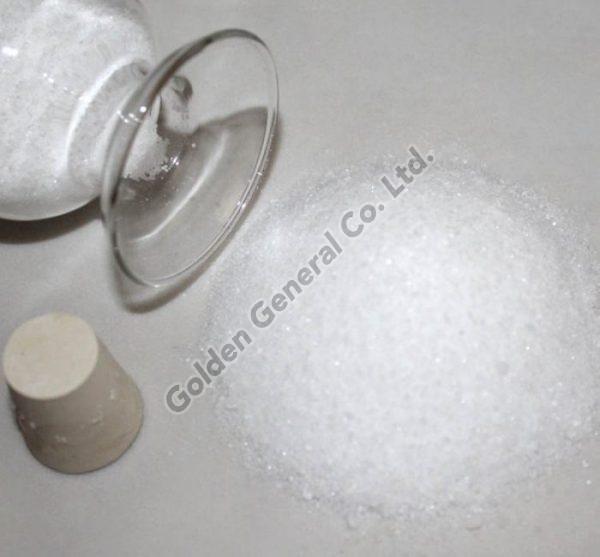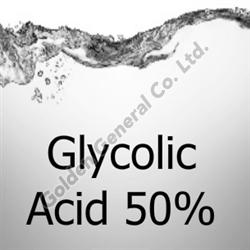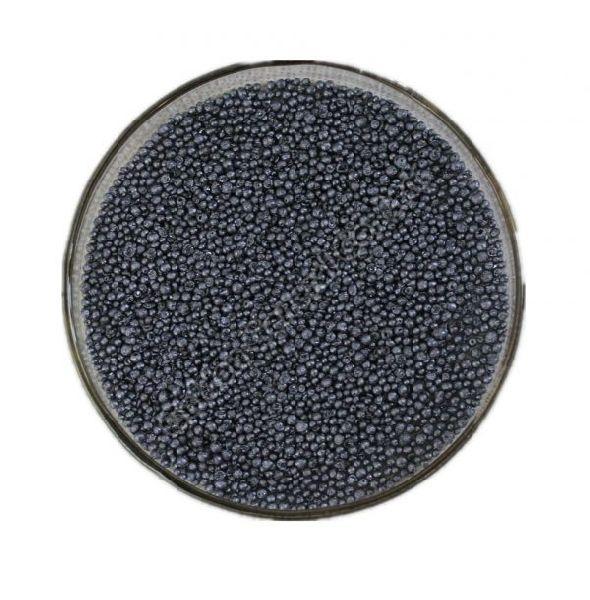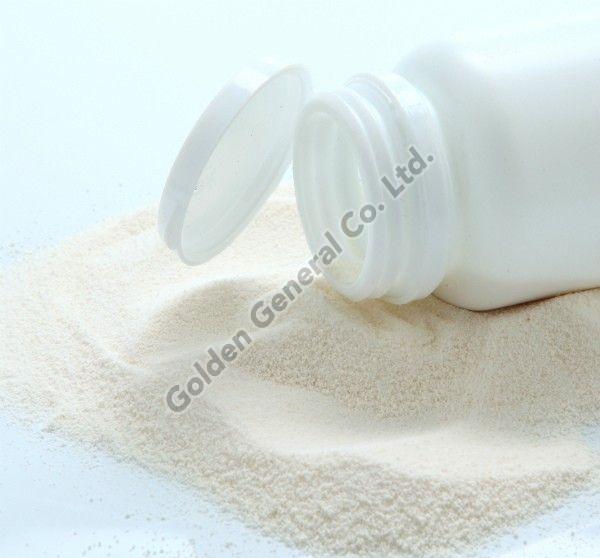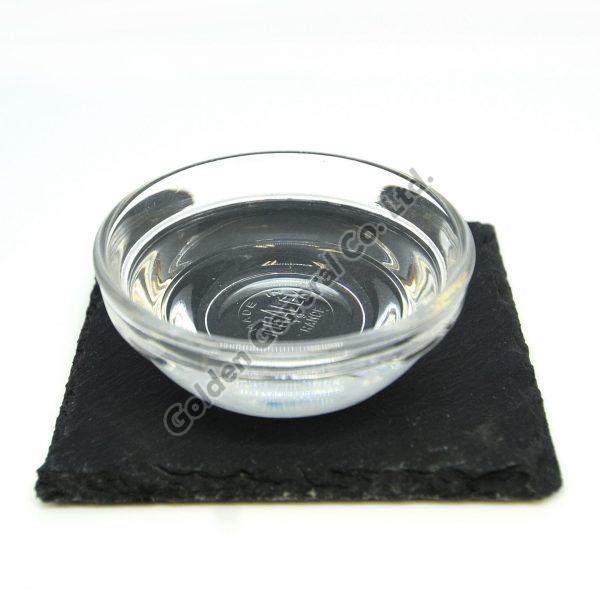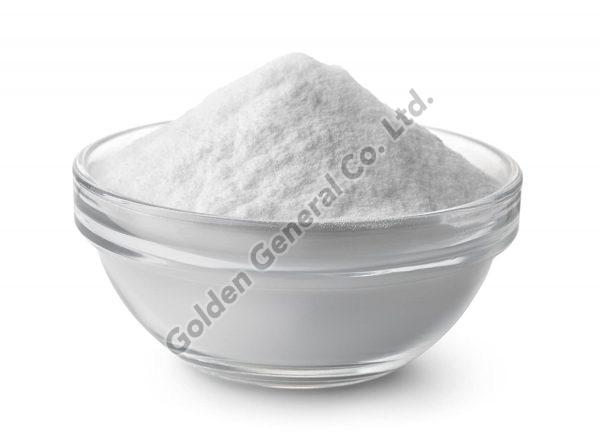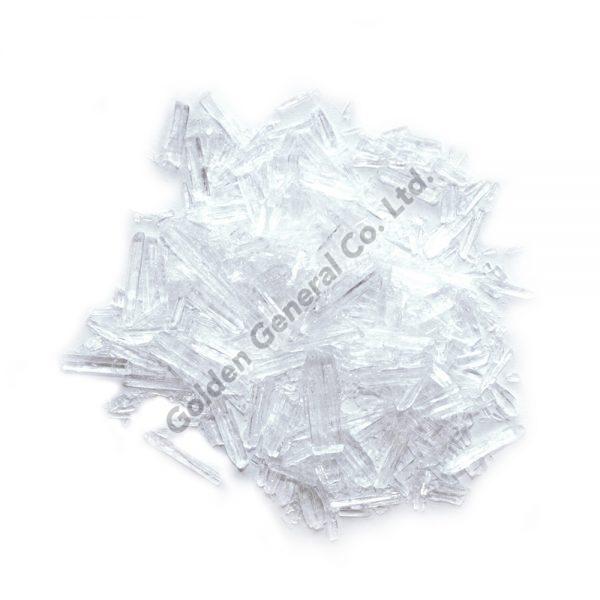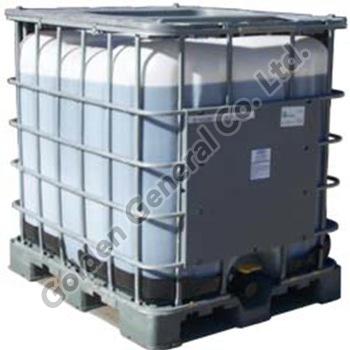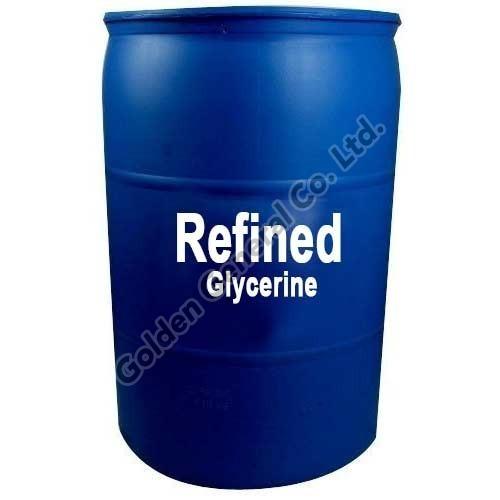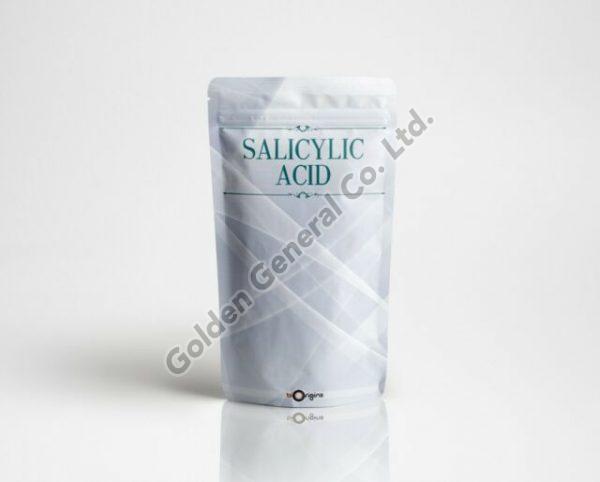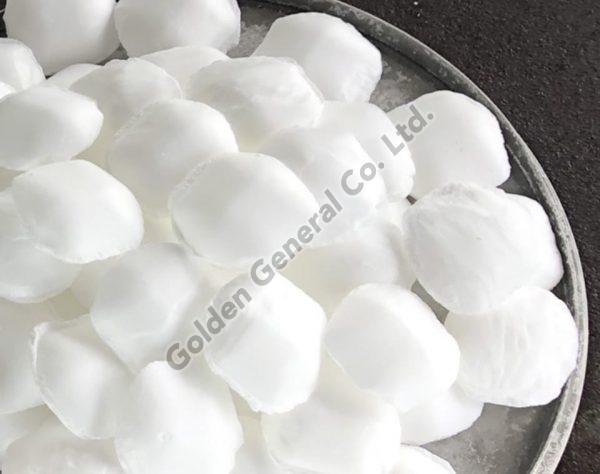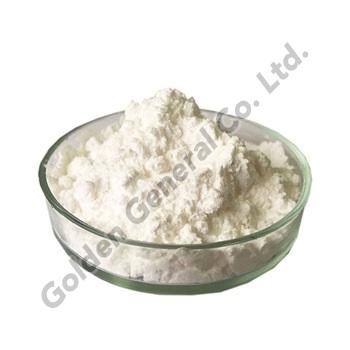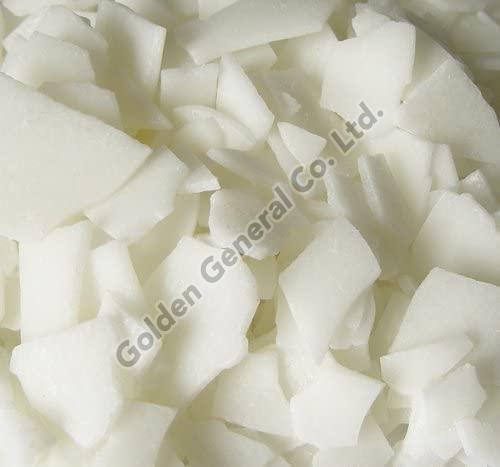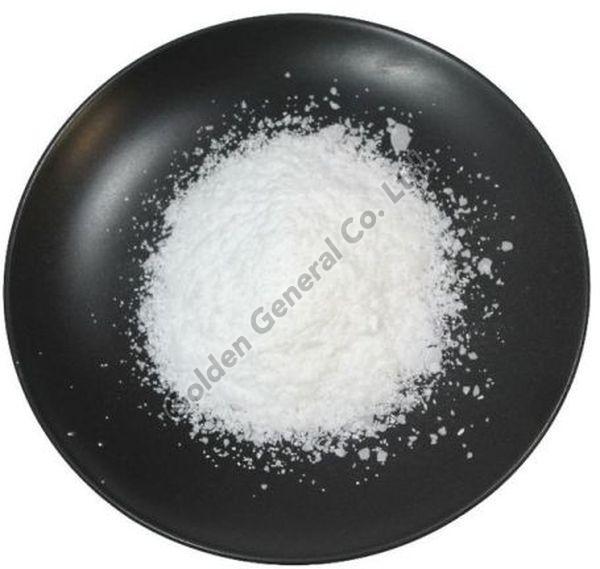Industrial Chemical
Leading Manufacturers, Exporters, Wholesaler, Retailer and Trader of Ascorbic Acid, Ascorbic Acid DC 97%, Calcium Ascorbate Powder, Caustic Soda, Citric Acid Anhydrous, Citric Acid Monohydrate, Denatured Ethanol, Ethanol, Fumaric Acid, Glycolic Acid, Iodine Prills, L-Sodium Ascorbate, Lactic Acid, Malic Acid, Menthol Crystal, Methanol, Refined Glycerin, Salicylic Acid, Sodium Cyanide Tablets, Sodium Hyaluronate Powder, Soy Wax Flakes and Stearic Acid from Watson Lane.
| Business Type | Exporter, Supplier, Trader |
| Shelf Life | 1 Year |
| Form | Powder |
| Characteristic | White Crystalline Powder, Sour Taste, Soluble in Water. |
| Storage Conditions | In a Tightly Sealed Container, Store in Cool and Dry Place, Keeping Away from Li |
| Directions | As a Dietary Supplement, Take 1000 Mg Up to Three Times Daily or as Directed By a Physician. |
| Free Of | Added Sugar, Soy, Dairy, Yeast, Gluten, or Additives |
Use Suggestion : As a pure ingredient to mix in water, juice, smoothie, shake, and use for formulation, R&D (research and development), cosmetic formulation, or any other proper purpose. General use amount for an adult consumption is 1/4 teaspoon of this powder (about 1 gram) 1~3 times daily. It is 1667% Daily Value based on a 2,000 calorie diet. An individual may adjust the serving size for some specific purposes.
Details :
- Ascorbic acid (Vitamin C) is an essential vitamin and is well known for working well with other enzymes and solutions. It may assist the body in building new tissue and help fortify the immune system.
- Ascorbic acid may help strengthen collagen, in synthesizing carnitine, and to support healthy metabolism.
- It may also help fortify the teeth and bones.† Vitamin C is known for its antioxidant properties, and it may support cardiovascular health.†
- Fortify the immune system†
- Support healthy tissue and cartilage†
- Help support healthy metabolism†
- Support the joints†
- Contribute to healthy bones and teeth†
- Antioxidant
- Support cardiovascular health†
- These statements have not been evaluated by the Food and Drug Administration. This product is not intended to diagnose, treat, cure or prevent any disease.
Supplement Facts
- Serving size: 1000 mg
- Serving per container: *
- Amount Per Serving % Daily Value**
- Vitamin C (as Ascorbic Acid)…1000 mg 1667%
- Daily Value not established.
- Based on 2,000 calorie diet
| Business Type | Exporter, Supplier, Trader |
| Characteristics | White or Semi-white Granules |
| Identification | Positive Reaction |
| Heavy Metals(lead) | ≤0.001% |
| Arsenic (As) | ≤2ppm |
| Lead(Pb) | ≤2ppm |
| Loss on Drying | ≤0.4% |
| Residue on Ignition | ≤0.1% |
| Assay | 96.0%~98.0% |
| Quantity | 1 Kilogram |
Application :
- As antioxidant and food nutrition enhancer.
- It is suitable for pressing of vitamin C tablet for absorption or chewing, and for compound vitamins dircectly pressing and the troche of vitmain minerals.
Packaging :
- 25kgs per carton
- 1*20” load 20mt with pallets
- 1*20”load 22mt without pallets
Storage :
- Keep container tightly closed. Keep container in a cool, well-ventilated area. Air Sensitive Sensitive to light.
- Store in lightresistant containers.
| Business Type | Exporter, Supplier, Trader |
| Quantity | 100 Grams ( 3.5 Oz ) |
| Form | Powder |
| Formula | C12H14CaO12 |
| PubChem CID | 21967 |
| Color | White |
| CAS No. | 5743-27-1 |
| Molar Mass | 390.310 g·mol−1 |
Calcium Ascorbate Benefits :
Calcium ascorbate provides vitamin C (ascorbic acid), which is an essential vitamin that is well known for its effects on the immune system. Once it has been absorbed into the intestines, it goes to work circulating through all of the watery areas of the human body. From there, it helps in the fortification of collagen while also acting as an antioxidant. It may also assists in the repair of damaged tissue and in helping to maintain healthy levels of collagen.†
Calcium ascorbate may work with other enzymes and solutions to assist the body in building new tissue and helping fortify the immune system.† Calcium ascorbate may help strengthen collagen and assist in synthesizing carnitine and helping to support healthy metabolism when taken in conjunction with a healthy diet and exercise.† Calcium ascorbate may also help fortify the teeth and bones, and vitamin C is known for its antioxidant properties and its support of cardiovascular health.†
- Fortifies the immune system†
- Supports healthy tissue and cartilage†
- Helps support healthy metabolism†
- Supports the joints†
- Contributes to healthy bones and teeth†
- Antioxidant
- Supports cardiovascular health†
How to use Calcium Ascorbate :
- Take this product by mouth with food, usually 1 to 2 times daily. Follow all directions on the product package, or take as directed by your doctor. Take this product with a full glass of water (8 ounces/240 milliliters) unless your doctor directs you otherwise.
- If you are taking the chewable tablets, chew them thoroughly and then swallow. If you are taking the sustained-release tablets, swallow the medication whole. Do not crush, chew, or break the tablets. If you are taking the powder, mix it thoroughly in the proper amount of liquid and stir well. Drink all of the liquid right away. Do not prepare a supply for future use.
- Dosage is based on your medical condition and response to treatment.
- Use this product regularly to get the most benefit from it. To help you remember, take it at the same time(s) each day.
- If you think you may have a serious medical problem, seek immediate medical attention
| Business Type | Exporter, Supplier, Trader |
| Application | Industrial |
| Purity | 99% |
| Grade Standard | Industrial Grade |
| Form | Powder |
| CAS No. | 1310-73-2 |
| MF | NaOH |
Manufacturing Process :
- Metathesis Reaction : By reacting sodium carbonate with calcium hydroxide, the reaction yields sodium hydroxide and calcium carbonate. Since sodium hydroxide is soluble while calcium carbonate is not, by doing filtration, calcium carbonate can be easily removed to obtain a crude solution of sodium hydroxide. This solution is then purified, processed and standardized for industrial consumption.
- Chloralkali Process : With the electrolysis of sodium chloride solution, solid sodium hydroxide is manufactured and obtained with the evaporation of water. Chlorine gas is also produced as a main by-product. Electrolysis occurs through three main types of cells, mainly mercury cell, diaphragm cell and membrane cell
| Business Type | Exporter, Supplier, Trader |
| Appearance | White Crystals or Crystalline Powder |
| Identification | Conforms |
| Clarity and Color of Solution | Conforms |
| Assay | 99.5 – 101.0% |
| Chloride(Cl) | 50 ppm max |
| Sulfate(SO42-) | 150 ppm max |
| Loss On Drying | 7.9 – 9.0% |
| Heavy Metals(pb) | 10 ppm max |
| Barium | Conforms |
| Iron | 50 ppm max |
| Calcium | 200 ppm max |
| Oxalate | 350 ppm max |
| Sulfated Ash | 0.10% max |
| Readily Carbon Sable Substances | Conforms |
| Chemical Formula | C6H8O7 |
| Citric Acid Uses: | Food Industry Pharmaceutical Industry Antiscalant Acid buffer for skincare pro |
More Uses For Citric Acid :
- Preservative: It has been used most frequently, and for hundreds of years, as a preservative for meat. It increases the acidity of the bacterial environment that may develop, making it difficult for the bacteria to survive.
- Marination: Citric acid breaks down proteins found in meats and makes meat tender and soft.
- Health: It’s good for skin care, skin color, mineral absorption, throat infections, and kidneys.
- Insecticides: Because citric acid destroys bacteria, fungus, mold, and viruses, it is used in insecticides, fungicides, and disinfectants.Buy Citric Acid Anyhydrous in Bulk
- Flavouring: Citric acid adds flavor to many foods, drinks and medicines. Alcohol: When citric acid is used in wines, it eliminates low acidity and improves taste. When used in beers, it reduces sugar loss and helps the process of turning sugar into beer.
What Citric Acid Prevents:
- Kidney Stones: It prevents the formation of kidney stones and allows the kidneys to function properly.
- Anti-oxidant: It neutralizes the negative effects of unstable compounds that can build up in the body and lead to cancerous cells.
- Skin Care: Citric acid helps the regeneration of skin tissue, helps the skin appear more youthful, and keeps skin clear of breakouts.
- Skin Colour: Citric acid prevents the discolouration of skin.
- Sore Throat: Gargling a combination of citric acid and water will clear infections from the throat and kill bacteria.
| Business Type | Exporter, Supplier, Trader |
| Density | 1.5 G/cm3 For Monohydrate |
| Form | Powder |
| Assay | 99.8 - 100.2 % |
| Formula | C6H8O7.H2O |
| Boiling Point | 310 Degree C |
| Solubility in Water | 73 G/100 Ml |
Function & Application :
- In the food industry, it is used as the acidulant in the making of soda, candy, biscuit, can, jam, juice and so on. it can be used as the antioxidant of grease.
- In the medicine industry, it is the raw material of many pharmaceuticals, such as ferric ammonium citrate (blood tonic), sodium citrate (blood transfusion agent) and so on. Moreover, citric acid is also used as the acidulant in lots of medicines.
- In the chemical industry, it can be taken as the non-toxic plasticizer to make the plastic film of food package.
- It can be used as both the auxiliary agent in the industrial and civil detergent to make nuisanceless detergent and the retarder in concrete.
| Business Type | Exporter, Supplier, Trader |
| EAN | 0840194119672 |
| Item Weight | 1 Gallon, 5 Gallon |
| Model Number | 5 Galeth |
| Number of Items | 1 |
| Mensuration | Gallons |
| UNSPSC Code | 41116000 |
| UPC | 840194119672 |
Details :
- 200 Proof Ethanol denatured with IPA and NP Acetate, Cannot be used for consumption, for industrial use only
- 5 Gallon Pail with Rieke Pouring Spout
- High Quality Ethanol, 100% Purity (Denatured: 90% Ethanol, 4.5% IPA, 5% NP Acetate)
- Use as fuel, stoves/charcoal, sanding aid, solvent (removes inks from clothing)
- Requires signature upon Delivery. May not be left unattended. May not be picked up at terminal.
Quantity :
- 1 Gallon - $25.00
- 5 Gallon - $125.00
| Business Type | Exporter, Supplier, Trader |
| CAS Number | 64-17-5 |
| Chemical Name | Ethanol 200 Proof (Pure) |
| Undenatured or Denatured | Undenatured Ethanol, Food Grade Ethanol, Pure Ethanol, Absolute Ethanol |
| Chemical Grade | Ethanol Pure 200 Proof |
| Assay | ACS/USP |
| Form | Liquid |
| Molecular Formula | C2H5OH |
| Formula Weight | 46.07 |
| Boiling Point | 78°C (173°F) |
| Linear Formula | CH3CH2OH |
No federal permit required for purchase.
In you are interested in purchasing Pure Food Grade Ethanol in bulk or if you have a question concerning what type of Ethanol (Pure Ethanol or Denatured Ethanol) to buy per your application, please call Fred Elabed at 216-990-3298.
Synonyms:
100% Alcohol (USP Ethanol) | 200 Proof Alcohol | Non-Denatured | Pure Food Grade Alcohol | Buy Ethanol (Ethyl Alcohol C ₂H ₆O) Online For Sanitizing, Solvent Uses, Surface Cleaning, Disinfection, Sterilization, Antiseptic & Tinctures
- Pure Ethanol 200 Proof, ACS/USP Grade
- Pure Alcohol 200 Proof, Kosher
- Pure Alcohol, ACS/USP Grade, 100% non-denatured
- Pure Ethyl Alcohol 200 Proof
Safety and Specification Information Info:
Please contact us to request a Safety Data Sheet (SDS) and Certificate of Analysis (COA) for Ethanol 200 Proof Pure (100%), Undenatured, ACS-USP Food Grade, Tax Paid. To browse our full line of extraction grade ethanol, click here. Food grade ethanol is for sale here.
Additional Info
- Upper / Lower flammability or explosive limits: 3.3 %(V) / 19 %(V)
- Freezing point: -114°C (-173°F)
- Relative Density: 0.785 g/mL at 25°C (77°F)
- Auto-ignition temperature: 363°C (685°F)
Quantity
- 1 Gallon - $50.00
- 5 Gallon - $200.00
| Business Type | Exporter, Supplier, Trader |
| Melting Point | 298-300 °C (subl.)(lit.) |
| Boiling Point | 137.07°C (rough Estimate) |
| Density | 1.62 |
| Vapor Pressure | 1.7 mm Hg ( 165 °c) |
| FEMA | 2488 | Fumaric Acid |
| Refractive Index | 1.5260 (estimate) |
| Flash Point | 230 °C |
| Storage Temp. | Store Below +30°C |
| Solubility 95% Ethanol | Soluble0.46g/10 Ml, Clear, Colorless |
| Form | Fine Crystalline Powder |
| Pka | 3.02, 4.38(at 25℃) |
| Color | White |
| PH | 2.1 (4.9g/l, H2O, 20℃) |
| Explosive Limit | 40% |
| Water Solubility | 0.63 g/100 mL (25 ºC) |
| JECFA Number | 618 |
| Merck | 14,4287 |
| BRN | 605763 |
| Stability | Stable at room temperature. Decomposes at around 230 C. |
Industries that Commonly Use Fumaric Acid
Due to the ingredient’s fruit-like flavor, food manufacturers have used fumaric acid as a food acidulant since the 1940s. It is an approved food additive in the U.S., the E.U., Australia, and New Zealand and is distinguished by the E number E297. It is commonly used as a food acidity regulator.
Fumaric acid is added to beverages such as beer, hard cider, spirits, wine, and low-alcohol drinks, as well as dairy-based products such as condensed milk, chocolate milk, eggnog, and cocoa. Many cheese products and dairy-based desserts contain the compound.
It is also added to various processed vegetables and fruits — including the canned, dried, cooked, and frozen versions. Candies, baked goods, breakfast cereals, snack foods, and pre-cooked pasta also often contain fumaric acid, as do processed meats, canned meats, soups, and broths.
Fumaric acid is also used in products that have to meet specific purity requirements, such as baking powders. In addition, its preservative and acidic characteristics aid in the baking of wheat tortillas.
It can be used like malic acid to substitute both citric acid and tartaric acid when sourness needs to be added to a product. Furthermore, it is an ingredient in various artificial vinegar flavors and can be used as a coagulant for certain food mixes.
The medical field has found that the ester dimethyl fumarate has remarkable benefits for people who suffer from severe multiple sclerosis. In a phase three trial, it significantly reduced disability progression as well as relapses. This quality is due to the fact that the ester activates the pathway that is primarily responsible at a cellular level for defense against oxidative stress. In addition, the compound is thought to be beneficial in the treatment of psoriasis, although further research is needed to definitively prove its effects.
Fumaric acid is used as a mordant for colorants as well as in the manufacture of polyhydric alcohols and polyester resins. Due to its mechanical and adhesive-promoting properties as well as its comparatively low toxicity, it was utilized to create one of the earliest metal-organic frameworks for commercial use.
| Business Type | Exporter, Supplier, Trader |
| Application | Industrial |
| Purity | 100% |
| Appearance | Transparent |
| Form | Liquid |
| Packaging Type | Bottle |
Glycolic acid is a colorless, odorless alpha-hydroxy-acid (AHA) derived from sugarcane. It’s a type of chemical exfoliant that dissolves the bonds between dead skin cells, allowing them to be wiped away easily, revealing smooth, younger skin below.
It’s actually the smallest naturally occurring AHA, Zeljka Kreptic, Ph.D., a lecturer in physical chemistry at the University of Salford, tells SELF. That means it can penetrate the skin more deeply and easily compared to other AHAs you might know, like lactic acid, which is why it is so commonly used.
AHAs like glycolic acid are water soluble, which means they dissolve in water. On the other hand, beta-hydroxy-acids (BHAs), such as salicylic acid, are oil soluble, meaning they dissolve in oil and can penetrate deeper into oily pores, Marisa Garshick M.D., board-certified dermatologist at the Manhattan Dermatology and Cosmetic Surgery Center, tells SELF.
But that doesn’t mean AHAs aren’t effective. If used correctly, as in a glycolic acid peel, they can be an easy way to get smoother, glowing skin.
| Business Type | Exporter, Supplier, Trader |
| Purity | 99.8% |
| Physical Form | Crystal |
| Chemical Formula | I2 |
| Usage | Industrial |
| Grade Standard | Technical Grade |
| Appearance | Greyish Black Or Blue Black |
| CAS No. | 7553-56-2 |
| Assay | 99.8% |
| Packaging | 1 Kg /a Aluminum Foil Bag, 25 Kg/ Drum(inner By Double Plastic Bag) |
Quantity :
- 1 Kg - $50.00
- 5 Kg - $250.00
- 10 Kg - $500.00
- 25 kg - $1,125.00
- 50 Kg- $2,250.00
Uses
- Used in the manufacture of iodide.
- Used to make pesticide, feed additives, dye, iodine, test, and medications.
- Used to make equivalent solvent, determine iodine value, the content and calibration of sodium solution concentration.Buy Iodine Prills Online
- Solution can be disinfectant, photoengraving for good fittings and thinning liquid preparation
Packaging Details: 1 kg foil bag ;25kgs packaging Fiber drum outside and plastic bag inside 1-25kgs packaging aluminium bag outside and double plastic bag inside
Delivery Details: Having stock and can ship it out within 3 days when getting the payment.
| Business Type | Exporter, Supplier, Trader |
| Appearance | White Crystalline Granules |
| Identification | Positive |
| Assay (as C 6H 7NaO 6) | 99.0 -101.0% |
| Specific Optical Rotation | +103° -+106° |
| Clarity of Solution | Clear |
| pH (10%, W/V ) | 7.0 – 8.0 |
| Loss On Drying | ≤0.25% |
| Sulphate (mg/kg) | ≤ 150 |
| Total Heavy Metals | ≤0.001% |
| Lead | ≤0.0002% |
| Arsenic | ≤0.0003% |
| Mercury | ≤0.0001% |
| Zinc | ≤0.0025% |
| Copper | ≤0.0005% |
| Residual Solvents (as Methanol) | ≤0.3% |
| Total plate count (cfu/g) | ≤1000 |
| Yeasts & molds (cuf/g) | ≤100 |
Used for various food of vitamin C fortifier, and can be used in the cool and refreshing beverage and dairy products.widely used in ham and sausage , and keep cake fresh When adding to the cosmetic , it can resist wrinkle , senescence ,and make the skin fair. The product has the double functions in supplying Vitamin C and strengthening the ability of absorbing Calcium.
| Business Type | Exporter, Supplier, Trader |
| Molar Mass | 90.08 g/mol |
| Density | 1.21 g/cm Cube |
| Form | Liquid |
| Formula | C3H6O3 |
| Acidity (pKa) | 3.86 |
| Purity | 98 % |
| Grade | Reagent Grade |
Uses for Lactic Acid 88% include (but are not limited to) :
- Cleansers
- Hair Care
- Skin Care
Lactic Acid 88% is best when added at the cool down phase of formulas.
Please note that products containing Alpha Hydroxy Acids may cause sun sensitivity.
For further information, including best before dates, please check the Certificate of Analysis (CofA) which can be accessed by clicking on the ‘attachments’ tab for this product. Please check all documentation before proceeding with purchase
| Business Type | Exporter, Supplier, Trader |
| Ingredients | Malic Acid |
| Allergen Information | Packed on premises that handles nuts (including peanuts), seeds, cereals, soya & products containing |
| Storage | Store in a Cool Dry Place Away from Sunlight. |
| Suggested Use | As Directed Depending On Use |
| Color | White |
| Solubility | Soluble in Water |
| Business Type | Exporter, Supplier, Trader |
| Form | Crystal |
| Aroma | Strong Minty Aroma |
| Extraction Method | Crystallized Quick Frozen |
| Intended Use | Food and Cosmetic Use |
| Crystal Size | 1/4-3/8 Inch Shards |
| Melting Point | Approximately 111 Degrees Fahrenheit |
| Quantity | 4 OZ |
Menthol is the solid constituent of oil of mint, to which the characteristic odor is due. Menthol is obtained by subjecting the distilled oil to a temperature of -22ºC by aid of a freezing mixture; the menthol crystallizes out in satiny crystals.
They dissolve readily into alcohol or essential oils, and they can be dissolved into water or oil at their melting point of 111.2ºF.
Menthol crystals are cooling, refreshing, and have a pleasantly strong minty aroma. They are often used in cosmetics, salves, balms, medicated creams, throat lozenges, toothpaste, mouthwash, gum, foot sprays, pain relief, shampoos, conditioners, linaments, shaving creams, oral or throat sprays, compresses, medicated oils, and cooling gels. Since menthol crystals are so concentrated, only a very small amount is needed within products.Buy Menthol Crystal in Bulk
Precautions : Menthol crystals should never be used as a single ingredient product or applied directly to the skin without proper dilution. May cause irritation to skin or mucous membranes. Proper dilution within a finished product of no more than 2% as a food additive or 5% for topical application.Buy Menthol Crystal in Bulk
| Business Type | Exporter, Supplier, Trader |
| CAS No. | 67-56-1 |
| Purity | 100% |
| Quantity | 55 Gallon |
| Product Name | Methanol |
| Feature | Accurate composition |
| Usage | Industrial |
| Packaging Type | Drum |
Methanol, also known as methyl alcohol, carbinol, wood alcohol, wood naptha or wood spirits, is a chemical compound with chemical formula CH3OH. It is the simplest alcohol, and is a light, volatile, colourless, flammable, poisonous liquid with a distinctive odor that is somewhat milder and sweeter than ethanol (ethyl alcohol). It is used as an antifreeze, solvent, fuel, and as a denaturant for ethyl alcohol.
Methanol is produced naturally in the anaerobic metabolism of many varieties of bacteria. As a result, there is a small fraction of methanol vapor in the atmosphere. Over the course of several days, atmospheric methanol is oxidized by oxygen with the help of sunlight to carbon dioxide and water.
Methanol burns in air forming carbon dioxide and water:
2 CH3OH + 3 O2 → 2 CO2 + 4 H2O
A methanol flame is almost colorless. Care should be exercised around burning methanol to avoid burning oneself on the almost invisible fire.
Because of its poisonous properties, methanol is frequently used as a denaturant additive for ethanol manufactured for industrial uses? this addition of a poison economically exempts industrial ethanol from the rather significant ‘liquor’ taxes that would otherwise be levied as it is the essence of all potable alcoholic beverages. Methanol is often called wood alcohol because it was once produced chiefly as a byproduct of the destructive distillation of wood. It is now produced synthetically by a multi-step process. In short, natural gas and steam are reformed in a furnace to produce hydrogen and carbon monoxide; then, hydrogen and carbon monoxide gases react under pressure in the presence of a catalyst. The reforming step is endothermic and the synthesis step is exothermic.
History
In their embalming process, the ancient Egyptians used a mixture of substances, including methanol, which they obtained from the pyrolysis of wood. Pure methanol, however, was first isolated in 1661 by Robert Boyle, who called it spirit of box, because he produced it via the distillation of boxwood. It later became known as pyroxylic spirit. In 1834, the French chemists Jean-Baptiste Dumas and Eugene Peligot determined its elemental composition.
They also introduced the word methylene to organic chemistry, forming it from Greek methy = “wine” + h?l? = wood (patch of trees). Its intended origin was “alcohol made from wood (substance)”, but it has Greek language errors. The term “methyl” was derived in about 1840 by back-formation from methylene, and was then applied to describe “methyl alcohol”. This was shortened to “methanol” in 1892 by the International Conference on Chemical Nomenclature. The suffix -yl used in organic chemistry to form names of radicals, was extracted from the word “methyl”.
In 1923, the German chemist Matthias Pier, working for BASF developed a means to convert synthesis gas (a mixture of carbon oxides and hydrogen) into methanol. This process used a zinc chromate catalyst, and required extremely vigorous conditions?pressures ranging from 30?100 MPa (300?1000 atm), and temperatures of about 400 ?C. Modern methanol production has been made more efficient through use of catalysts (commonly copper) capable of operating at lower pressures.
The use of methanol as a motor fuel received attention during the oil crises of the 1970s due to its availability and low cost. Problems occurred early in the development of gasoline-methanol blends. As a result of its low price some gasoline marketers over blended. Others used improper blending and handling techniques. This led to consumer and media problems and the last time out of methanol blends.
However, there is still a great deal of interest in using methanol as a neat (unblended) fuel. The flexible-fuel vehicles currently being manufactured by General Motors, Ford and Chrysler can run on any combination of ethanol, methanol and/or gasoline. Neat alcohol fuels will become more widespread as more flexible-fuel automobiles are manufactured.
In 2006 astronomers using the MERLIN array of radio telescopes at Jodrell Bank Observatory discovered a large cloud of methanol in space, 300 billion miles across.
Production
Today, synthesis gas is most commonly produced from the methane component in natural gas rather than from coal. Three processes are commercially practiced. At moderate pressures of 1 to 2 MPa (10?20 atm) and high temperatures (around 850 ?C), methane reacts with steam on a nickel catalyst to produce syngas according to the chemical equation:
CH4 + H2O → CO + 3 H2
This reaction, commonly called steam-methane reforming or SMR, is endothermic and the heat transfer limitations place limits on the size of the catalytic reactors used. Methane can also undergo partial oxidation with molecular oxygen to produce syngas, as the following equation shows:
2 CH4 + O2 → 2 CO + 4 H2
this reaction is exothermic and the heat given off can be used in-situ to drive the steam-methane reforming reaction. When the two processes are combined, it is referred to as autothermal reforming. The ratio of CO and H2 can be adjusted by using the water-gas shift reaction,
CO + H2O → CO2 + H2,
to provide the appropriate stoichiometry for methanol synthesis.
The carbon monoxide and hydrogen then react on a second catalyst to produce methanol. Today, the most widely used catalyst is a mixture of copper, zinc oxide, and alumina first used by ICI in 1966. At 5?10 MPa (50?100 atm) and 250 ?C, it can catalyze the production of methanol from carbon monoxide and hydrogen with high selectivity
CO + 2 H2 → CH3OH
It is worth noting that the production of synthesis gas from methane produces 3 moles of hydrogen for every mole of carbon monoxide, while the methanol synthesis consumes only 2 moles of hydrogen for every mole of carbon monoxide. One way of dealing with the excess hydrogen is to inject carbon dioxide into the methanol synthesis reactor, where it, too, reacts to form methanol according to the chemical equation
CO2 + 3 H2 → CH3OH + H2O
Although natural gas is the most economical and widely used feedstock for methanol production, other feedstocks can be used. Where natural gas is unavailable, light petroleum products can be used in its place. The South African firm Sasol produces methanol using synthesis gas from coal.
Uses
Methanol is used on a limited basis to fuel internal combustion engines, mainly by virtue of the fact that it is not nearly as flammable as gasoline. Methanol blends are the fuel of choice in open wheel racing circuits like Champ cars, as well as in radio controlled model airplanes (required in the “glow-plug” engines that primarily power them), cars and trucks. Dirt circle track racecars such as Sprint cars, Late Models, and Modifieds use methanol to fuel their engines.
Drag racers and mud racers also use methanol as their primary fuel source. Methanol is required with a supercharged engine in a Top Alcohol Dragster and, until the end of the 2005 season, all vehicles in the Indianapolis 500 had to run methanol. Mud racers have mixed methanol with gasoline and nitrous oxide to produce more power than gasoline and nitrous oxide alone.
In addition to direct use as a fuel, methanol (or less commonly, ethanol,) is used as a component in the chemical formation of biodiesel fuel.
Methanol is a traditional ingredient in methylated spirit or denatured alcohol.
During World War II, methanol was used as a fuel in several German military rocket designs, under name M-Stoff, and in a mixture as C-Stoff.
One of the drawbacks of methanol as a fuel is its corrosivity to some metals, including aluminum. Methanol, although a weak acid, attacks the oxide coating that normally protects the aluminum from corrosion.
| Business Type | Exporter, Supplier, Trader |
| Application | Cosmetics, Personal Use |
| Classification | Pharma Grade |
| Purity | 99% |
| Form | Liquid |
| Odour | Slight Milky To Odourless |
| Flash Point | 100-150 Deg C |
Application:
- Medicinal and Pharmaceuticals - As a lubricating laxative in pharmaceutical formulations. It is also used as auxiliary solvent, wetting agent, sweetening agent, penetrating agent, and anti-freezing agent. It is widely used in the manufacturing of salves, tinctures, solutions, ointments, auristillas, glycerites, syrups, tablets, and injections.
- Personal Care - Glycerol can be used in soaps, shower gels, and cream cosmetics for moisture and protection. It can also be used in toothpaste to ensure paste consistency.
- Textiles - Glycerol can be used for lubricating, sizing, and softening yarns and fabrics
| Business Type | Exporter, Supplier, Trader |
| Application | Intermediate of Antiseptics |
| CAS No. | 69-72-7 |
| Purity | 100% |
| Melting or Freezing Point | 318F |
| Appearance | White Crystalline Powder, |
| Processing | Synthetic |
| Grade Standard | Technical Grade |
Quantity :
- 1 LB - $12.76
- 4 LB - $47.50
- 55 LB - $378.86
| Business Type | Exporter, Supplier, Trader |
| Melting Point | 563.7 °C(lit.) |
| Boiling Point | 1497°c |
| Density | 1.6 |
| Vapor Density | 1.7 (vs Air) |
| Vapor Pressure | 1 mm Hg ( 817 °c) |
| Flash Point | 1500°C |
| Storage Temp. | Poison Room |
| Solubility H2O | 1 M at 20 °C, clear, colorless |
| Form | Solid |
| Color | White |
| PH | 11.7 (100g/l, H2O, 20°C) |
| PH Range | 11-12 |
| Water Solubility | 37 g/100mL (20 ºC) |
Methods Of Preparation
Buy Sodium cyanide which is prepared by treating hydrogen cyanide with sodium hydroxide:
HCN + NaOH → NaCN + H2O
In earlier times Sodium cyanide was prepared by the Castner process relating the reaction of sodium amide with carbon at elevated temperatures.
NaNH2 + C → NaCN + H2
The structure of solid NaCN is associated to that of sodium chloride. The anions and cations are each six-coordinate. Potassium Cyanide takes on a similar structure.
Applications
- Sodium Cyanide suppliers and manufacturers mainly buy Sodium Cyanide in mining industry where it is used to extract gold and precious metals.
- It is used as a vital precursor to distinct useful organic and inorganic chemicals, including pharmaceuticals.
- Alike the process the uses of potassium cyanide (KCN, a close relative of sodium cyanide) are to manufacture potassium gold cyanide.
Toxicity Of Sodium Cyanide
Industries buy Sodium Cyanide which is similar to other soluble cyanide salts, which is amongst the most quickly acts of all known poisons. NaCN is a strong inhibitor of respiration, acting on mitochondrial cytochrome oxidase and hence blocking electron transport. This results in decreased oxidative metabolism and oxygen utilization. Lactic acidosis further occurs as a consequence of anaerobic metabolism. An oral dosage as small as 200–300 mg can be serious.
Health And Safety Tips
Sodium cyanide manufacturer uses the chemical which is very poisonous because of its being a cyanide salt. It is one of the fastest reacting poisons and is deadly even if swallowed in small amounts. Exposure to the solid NaCN can also be hazardous due to its capability to liberate the poisonous HCN gas gradually in air.
Sodium Cyanide In Environment
Sodium Cyanide can be in breathing air, drinking water, eating food, or touching soil that contains cyanide. Sodium Cyanide penetrates into water, soil, or air as a result of both natural processes and industrial activities. When present in air, it is frequently in the form of gaseous hydrogen cyanide. It is present in the smoking cigarettes which are most likely one of the chief sources of cyanide contact for people who do not work in cyanide-related industries.
Present in the wild animals, birds and aquatic organisms due to the exposure of the human activities, cyanide forms arising from it, which might potentially occur at various stages in the life cycle of sodium cyanide – from sodium cyanide manufacturing, usage and ultimately release to the environment.
Why Buy Sodium Cyanide From Worldofchemicals.Com?
A few of the reasons why you should buy Sodium Cyanide from us include:
- Global Reach: We are an online portal with Sodium Cyanide suppliers and manufacturers listed from across the globe.
- Quality Assurance: With our verified list of Sodium Cyanide suppliers we ensure the quality of the Sodium Cyanide.
- Fast Processing: Our experts process the enquiries quickly, connecting genuine buyers and suppliers of Sodium Cyanide.
- Customer Service: Communications is the key! And, our support team keeps our customers happy.
Odor : The dry salts are odorless, but reaction with atmospheric moisture produces HCN, whose bitter almond odor is detectable at 1 to 5 ppm; however, 20 to 60% of the population are reported to be unable to detect the odor of HCN.
| Business Type | Exporter, Supplier, Trader |
| Quantity | 10 gram |
| Characteristic | White Powder, Blunt Taste, Soluble in Water. |
| Storage Conditions | In a Tightly Sealed Container, Store in Cool and Dry Place, Keeping Away from Strong Light and Heat. |
| Size Options | Kinds of Packing Sizes are Available. Please Choose to Order. |
| Form | Powder |
| Shelf Life | 2 Years |
Here are just some of the benefits to using this wonderful substance:
- Most powerful moisturizer and humectant available
- Acts like an “instant facelift”
- Keeps skin plump, soft and smooth
- Reduce signs of aging
- Increases hydration of skin
- Enhances suppleness and elasticity
- May prevent UV damage to skin
- Can reverse free radical damage to skin
- Reduce the appearance of wrinkles
- Ideal ingredient for after skin peels
- Promotes firm, radiant, even-toned skin
Packaging Details :
- 25 kg/drum (25 kg net weight,28 kg gross weight;Packed in a cardboard-drum with two plastic-bags inside)
- Or 1-5 kg/bag (1 kg net weight, 1.2 kg gross weight;Packed in an aluminum foil bag)
- Or as per your request.
Use Suggestion:
- As a pure ingredient to mix in water, juice, smoothie, shake, and use for formulation, R&D (research and development), cosmetic and skin care formulation, or any other proper purposes.
- General use amount for an adult consumption is 1/8 teaspoon of this powder (about 100 milligrams) once daily. An individual may adjust the serving size for some specific purposes.
| Business Type | Exporter, Supplier, Trader |
| Shelf Life | 1years |
| Color | White |
| Taste | Flakes |
| Packaging Type | Plastic Packet |
| Melting Point | 52℃ / 125.6℉ |
| Smell | A Little Scented of Plant |
| Use For | Candle in Any Shape, Can Be Added in Dye and Essence Oil. Buy Soy Wax Online |
| Quantity | 1 Lb, 2 Lb, 5 Lb, 20 Lb |
Quantity :
- 1 LB - $7.50
- 2 LB - $14.00
- 5 LB - $25.00
- 20 LB - $100.00
Feature:
- 100% natural, no harm to people.
- Smokeless
- Long lasting burning time.
- NO paraffin addition.
How to use:
- Pour the wax in a container
- Melt the wax (don’t put the wax into water directly)
- Add color and essense as you like, and mix them slowly
- Pour the liquid mix into mode slowly in several times
- Wait it to be cool and finish
| Business Type | Exporter, Supplier, Trader |
| CAS | 57-11-4 |
| Appearance | White or yellowish, waxy solid flakes |
| Solubility | Soluble |
| Recommended Retest or Shelf Life | Indefinite |
| Storage | Cool Dark Place |
| Quantity | 1 LB |
Stearic acid used in detergents, shampoos, shaving cream. The small pastilles are ideal in an emulsifying agent in creams lotions and deodorants.
Stearic Acid can be used in making cosmetics, candles, foods, oil pastels, dietary supplements, plastics and softening rubber. In soap making it is used to harden soaps, especially soaps made with vegetable oil. It can also be found in toothpastes and deodorant. Stearic Acid is used to bind, stabilize and thicken creams and lotions and is the premier choice for most body care product manufacturers. Stearic Acid should be used to thicken lotions and creams at about 2-5%.Buy Stearic Acid in Bulk
In cosmetics, the esters of Stearic Acid can be used in addition to glycol distearate, ethylene glycol and glycol stearate to create a pearlescent effect. This pearlescent effect is used in soaps, shampoos and other cosmetic products. While the product is in molten form these ingredients are added and then allowed to crystallize in controlled conditions.
Stearic Acid is used in the manufacturing of shortenings, spreads, cream bases for baked products and margarines. It is also in cocoa butter and beef fat. Along with corn syrup or sugar it can be used as a hardener in candies. It is used in the packaging of foods as well.Buy Stearic Acid in Bulk
When eaten, Stearic Acid does not appear to increase the cholesterol levels in the blood, unlike most of the saturated fats,. This is because enzymes in the liver convert it to an unsaturated fat during the digestive process.Buy Stearic Acid in Bulk
Stearic Acid can be used in fireworks to coat metal powders such as iron and aluminum. This coating prevents the oxidation of these powders so the compositions can be stored for longer amounts of time. Stearic Acid is also commonly used as a lubricant in the pressing of ceramic powders and injection molding.


